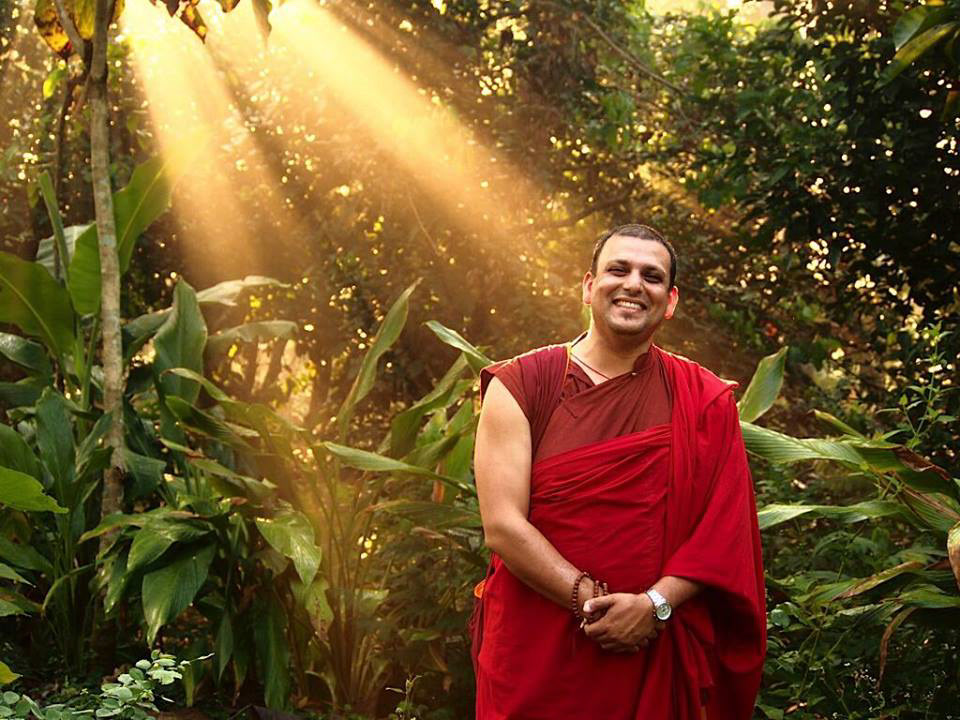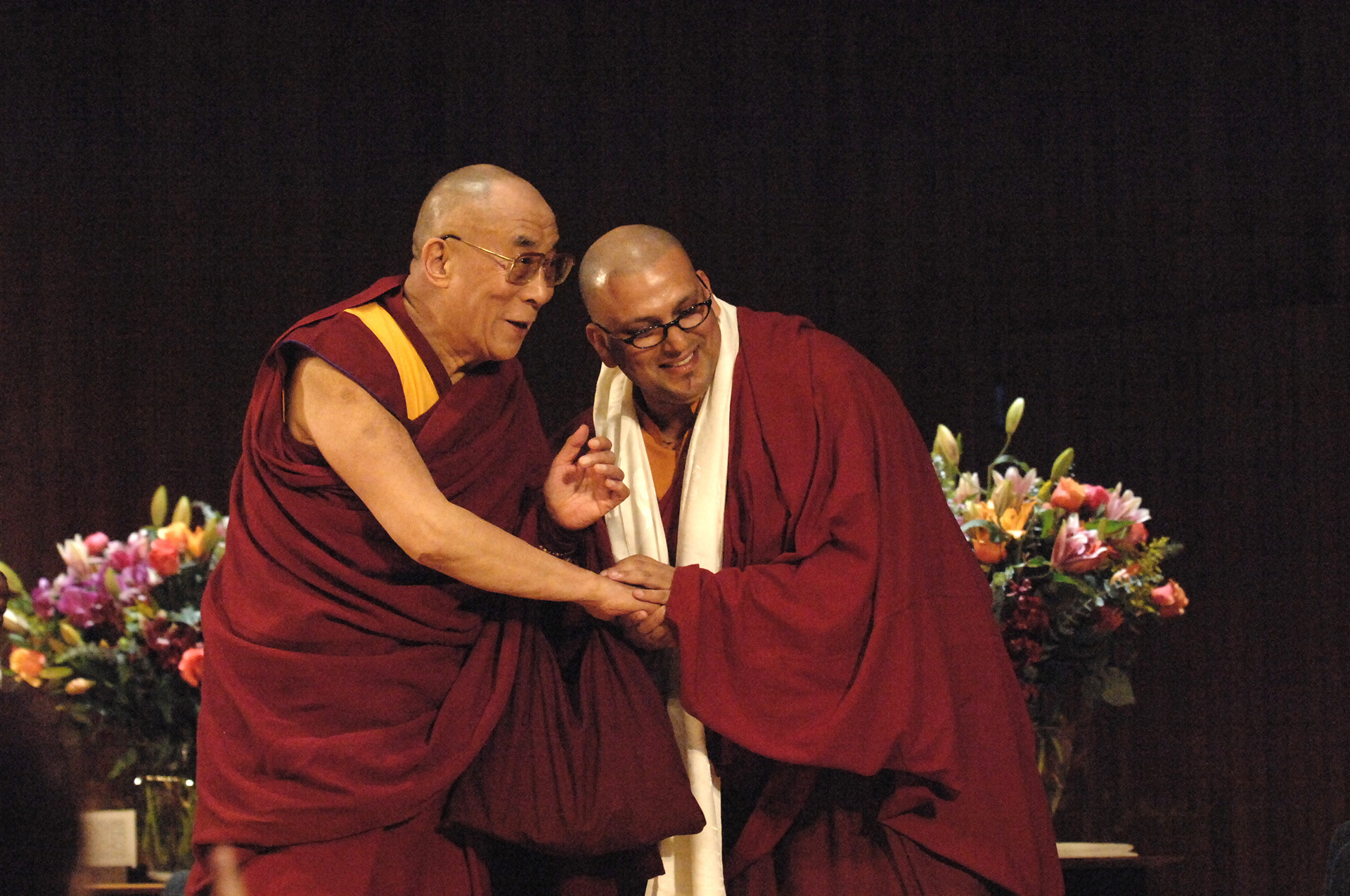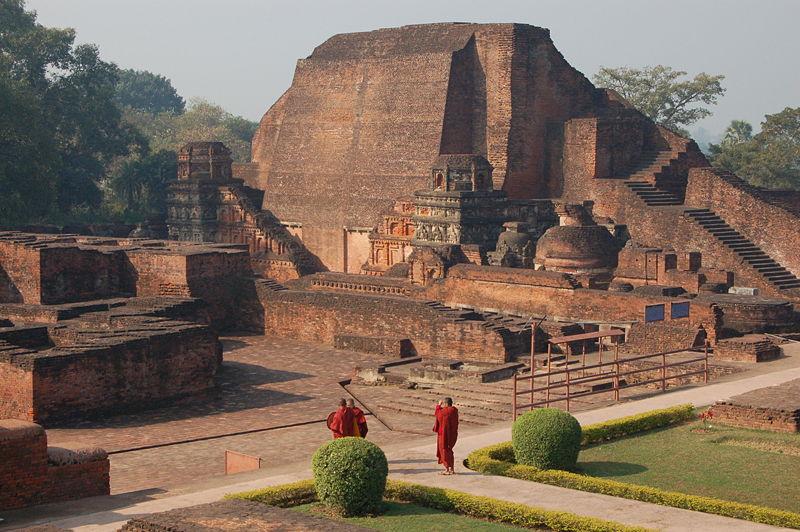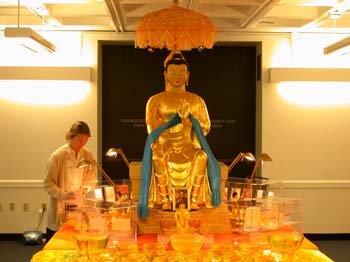The Prajnopaya Buddhist Community at the Massachusetts Institute of Technology: Upholding Buddhist Values and Traditions in the New Age.
Buddhism is said to be comprised of three jewels that define the main components of the religion. These three jewels are known to be Buddha, Dharma, and Sangha. The Buddha, being the founder of Buddhism himself, represents a figure to follow and learn about in order to escape suffering. The dharma consists of the Buddha’s teachings, and are to be followed and interpreted so as to build up to the eventual cessation of suffering. Finally, the Sangha, which will be the main focus of this essay, is the established Buddhist community. There are numerous types of Buddhist communities, and as history progressed, they individually created or began to follow their own distinct set of rules and traditions to follow and abide by.
Buddhism traditionally consists of what is known as the “fourfold sangha”: Monks, Nuns, Laymen and Laywomen. The task of these separate communities have always been to spread the teachings of the Buddha and successfully put an end to suffering.
The Prajnopaya Buddhist community at the Massachusetts Institute of Technology, founded in 2002, realizes a goal to teach Buddhist meditation practices and spread traditional Buddhist philosophy. It is currently directed by Buddhist chaplain, the Venerable Tenzin Priyadarshi at MIT. The Venerable Tenzin Priyadarshi Rinpoche began his Buddhist journey at the young age of 10, joining a Buddhist monastery in Rajgir. He began studying Buddhism from Indo-Tibetan and Japanese origins and was able to learn secular subjects as well. He was later ordained by the Dalai Lama himself, to whom the director attributes many of his Buddhist teachings. He also studied under Mother Teresa in Calcutta. There he was able to understand the true meaning of compassion and the extent to which human nature operates. Upon receiving such a wide range of knowledge surrounding Buddhist traditions and philosophy, he was invited to represent the religion of Buddhism at a conference in 1997 as Christian persecution in India was taking place.
Being the founder of the Prajnopaya Institute, along with CEO of the Dalai Lama Centre for Ethics and Transformative Values at MIT, the Venerable Tenzin Priyadarshi is responsible for implementing and hosting many different actions towards the unconditional care of worldly citizens. Aside from these large tasks, he also finds the time to teach on a global scale subjects such as philosophy and science. He co-wrote his biography, called Running Toward Mystery, which details the steps he took in his life recounted from his childhood up to adulthood. Not only does it retell the story of his journey to the world of Buddhism, but it also inspires and encourages the viewer to explore things such as enlightenment, the cessation of suffering and the importance of caring for others; a concept that shines through in his life works, and is also present in the ethics of this Buddhist community as well.

The Prajnopaya Buddhist Community at MIT is currently affiliated with the Prajnopaya Foundation, the Prajnopaya Institute, the Center for Ethics, and the Massachusetts Institute of Technology. At the Prajnopaya Institute of Buddhist Studies, the globally recognized community focuses on the betterment of society and providing relief of suffering to individuals and other communities in general. Parallel to the traditions of Mahayana Buddhism, Buddhist practitioners value the importance of selflessness and caring for others. This foundation focuses its efforts through the creation of multiple Health, Education and Social Welfare projects. They target areas in India, Nepal, Japan, the United States and Sri Lanka. Aside from humanitarian activities, the institute also aims to spread Buddhist philosophy and offers several courses in the teachings. The word Prajnopaya comes from the Sanskrit “Prajna,” which means wisdom, and “Upaya,” which means compassion and skillful means. They credit their path towards helping and caring for others to his Holiness the Dalai Lama. Other patrons of this foundation include His Holiness Sakya Trizin, His Holiness Chhetsand Rinpoche the 37th Drikung Kyabgon, His Eminence Schechen Rabjam Rinpoche, His Eminence Lopon Tenzin Namdak, and the Most Venerable Samdhong Rinpoche.

Prajnopaya at MIT includes individuals of all levels of experience or knowledge, and also encourages teachers from all schools of Buddhism to participate as well.
The institution recognizes and affiliates with the Bodhimarga, or the “Path to Enlightenment.” This community follows a set of customs, introduced to the institution in the 21st century that focus on studying Buddhadharma. This includes familiarizing oneself with all aspects of Buddhism, including Theravada, Mahayana and Vajrayana Schools of thought. The community is able to spread their knowledge and beliefs through retreats and mission trips.
The community emphasizes the importance of the traditional Nalanda practice of Buddhism. Initially, Nalanda was a location for studying the Mahasamgika school, which is attributed to the formation of Mahayana Buddhism. Nalanda University, founded by Indian emperor Asoka and Mahayana philosopher Nagarjuna, became the first, most well-known monastic university that contributed to the spread of Buddhism to the wider parts of Central, East, and Southeast Asia. The school was unique in that it not only focused on Buddhist studies, but also explored and instructed on subjects such as language, writing, medicine, and the arts. This trait allowed the university to reach a larger audience as well, further aiding in the spread of Buddhism across Asia.


Nalanda University’s true claim to fame, however, was the seventeen exalted scholars or panditas. Their teachings were of the utmost significance throughout Buddhist history and remain so today. The scholars’ firsthand experiences and involvements lead to such appraisal of their writings that function as primary sources for the Buddhist religion. These scholars consist of Nagarjuna, Aryadeva, Asanga, Vasubandhu, Buddhapalita, Dignaga, Bhavaviveka, Arya Vimuktisena, Chandrakirti, Dharmakirti, Shantideva, Shantarakshita, Kamalashila, Haribhadra, Gunaprabha, Shakyaprabha, and Atisha. His Holiness the Dalai Lama also constructed a poem detailing the importance and greatness of these scholars titled, “Supplication to the Seventeen Panditas of Nalanda.”
Nalanda traditions survived even after the university’s destruction in the 13th century. Such traditions primarily entailed the study of philosophy and psychology of religion and individual beings, along with a steady focus on caring for all sentient beings and ridding them of suffering. It was also said that the Tibetan Buddhist schools originated from the Nalanda tradition. With that said, Nalanda produced many of the controversial and conflicting theories and philosophies of Buddhism; these beliefs do however exist today in harmony.
This Buddhist community, while it invites members of all schools of Buddhism, including Theravada, Mahayana and Vajrayana, mainly orchestrates on a Mahayana structured path. The community members aim to teach and act on the importance of helping and caring for others, and overall relieving sentient beings of suffering. This is in relation with the Mahayana path of the Bodhisattva, where individuals take a specific vow to help all sentient beings. Mahayana Buddhism is known as the “Great Vehicle” because through the correct mindset, individuals begin their journey towards enlightenment through vowing to remain in cyclic existence until all sentient beings are relieved of their suffering.

Anaise Gaillard
References
About The Venerable Tenzin Priyadarshi. imonk.org. Web. 07/11/2020.
About The Venerable Tenzin Priyadarshi. imonk.org. Web. 07/11/2020.
Bodhimarga. 2007, http://www.bodhimarga.org/mission-affiliations/ Accessed 5 Nov. 2020.
Damdul, Dorji, “Relevance of the Nalanda tradition for Contemporary Society: Wisdom, Non-Sectarianism and Secular Ethics.” Himalayan Bridge, edited by Niraj Kumar, Goerge van Driem,and Phunchok Stobdan, KW publishers, New York NY, 2021, pp. 35-
DSCN0842.jpg. 2003. Buddhist Relics:Pray fro World Peace, Boston. web.mit.edu. Web. 05 Nov 2020.
Loizzo, Joseph, “Kalacakra and the Nalanda tradition: Science, Religion, and Objectivity in Buddhism and the West.”As long as Space Endures: Essays on the Kalacakra Tantra in Honor of H.H. the Dalai Lama, edited by A. Arnold, Snow Lion Publications, Ithaca New York, 2009, pp. 334-336.
Nalanda University. WordPress.com. Web. 06/11/2020.
Libraries. Nalanda University. WordPress.com. Web. 06/11/2020.
Prajnopaya. Institute of Buddhist Studies, https://www.prajnopaya.org/prajmandala/ Accessed 5 Nov. 2020.
Prajnopaya. The Buddhist Community at the Massachusetts Institute of Technology, 2002 http://web.mit.edu/metta/www/chaplain.shtml Accessed 5 Nov. 2020
“The Seventeen Panditas of Indian Buddhism.” Shambhala Publications, https://www.shambhala.com/the-seventeen-panditas/ Accessed 5 Nov. 2020.